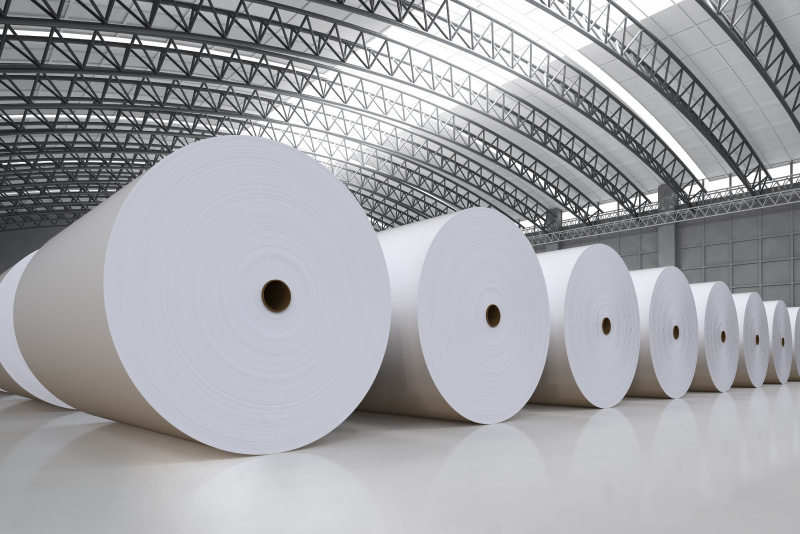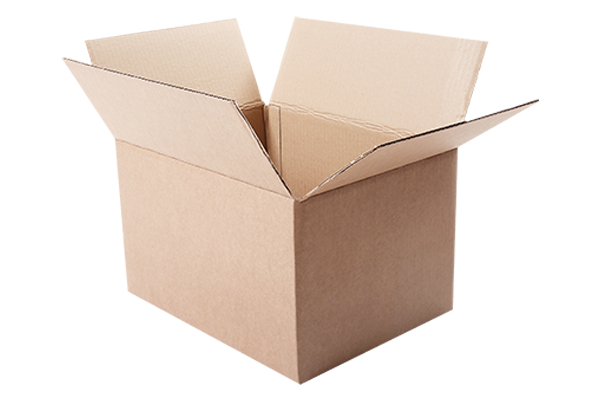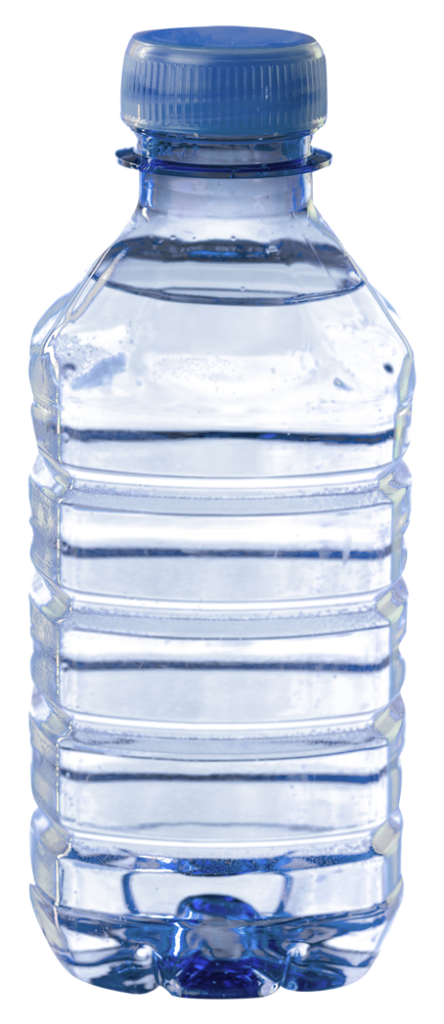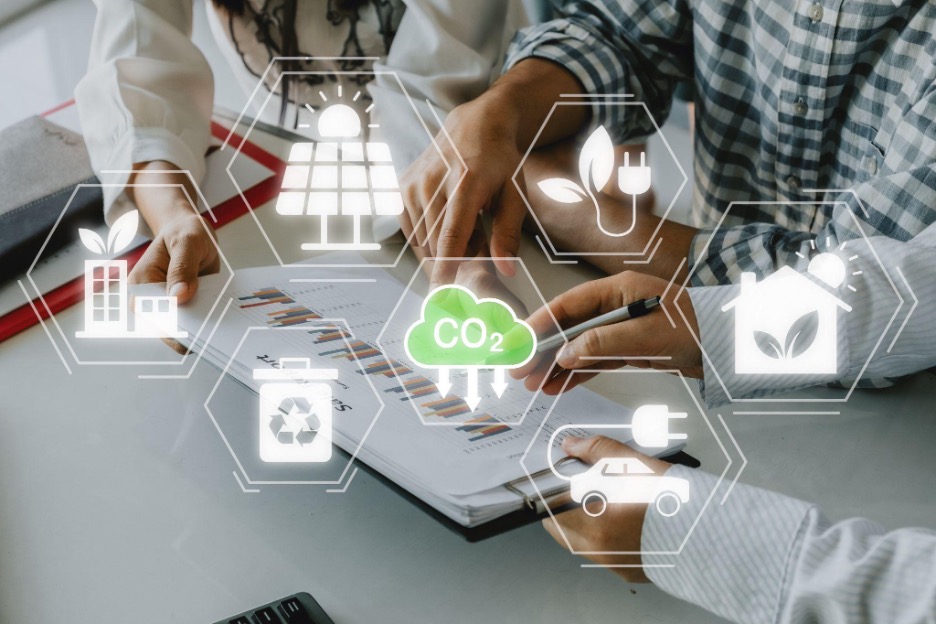Billions of Boxes
Each year, over 400 million metric tons of paper, paperboard and cardboard are produced globally, with over half of production originating from China, the United States, and Japan combined. Products made from these materials are, to a large extent, very recyclable. However, the paper eventually reaches a point where it can no longer be recycled due to the progressive shortening of fibers each time it is recycled. Understanding the paper production process is instrumental to understanding how recycling works for paper products.
In very simple terms, trees are reduced to piles of wood chips as the first step. The chips are then pulverized in the presence of water (sometimes with chemicals added) in order to separate out the fibers in the tree. This process is known as pulping. Purely mechanical pulping is more environmentally friendly, and produces higher yields, however chemical pulping results in a stronger pulp. Pulp has a brownish color and paper made directly from pulp is known as kraft paper (kraft is German for strong). Unless it is going into the making of cardboard, it will be bleached and prepared for the process of becoming paper.
The next process in papermaking consists of adding fillers to the pulp to reach the density requirements and then using blades and rollers to achieve the desired dimensions. In this stage of papermaking, the product is still wet, so additional moisture is removed by pressing using rollers and belts to extract the liquid. The resultant paper needs to be dried to about a 5% moisture content before being rolled up on very large rolls for transport. When the pulp is made of short, recycled fibers and scrap paper, it is referred to as paperboard. Paperboard, by its very nature contains recycled paper.

Since about ninety percent of all material shipments use cardboard boxes, a significant amount of paper product will be kraft paper destined to become cardboard. Cardboard boxes were introduced in 1817 during the first industrial revolution. This radically changed the nature of packaging as industries rapidly adopted the lightweight but sturdy construction of this form of paper. The most common version is referred to as a single wall, consisting of a panel of “fluted” paper glued and sandwiched between two sheets of kraft paper. Also called corrugated cardboard. Small cardboard boxes of lighter paperboard became popular at the beginning of the 20th century to store and sell breakfast cereal. This use of cardboard to construct boxes has grown rapidly to the point that most products are sold using some form of cardboard box.
RECYCLING - COLLECTION
Looking at the recycling part of the equation. The first hurdle to overcome is collection. The typical recycled corrugated cardboard product is referred to as OCC or Old Corrugated Cardboard. There are four grades to contend with for recycling purposes:
- The first and best category is called OCC 100% Clean. This requires the following attributes: Cardboard must be free of any trash, paper goods and Styrofoam. (Some tape attached to the boxes is OK).
- Next, there is OCC 90% Clean. This is defined as cardboard which must consist of 90% or more clean cardboard under this specification.
- Now we get to the more problematic products. OCC Heavy Contaminated cardboard is described as cardboard with over 10% trash content. This requires significant labor to separate the cardboard from the trash for recycling.
- The final category is OCC Waxed which is simply waxed cardboard which generally will not be recycled. This type of OCC, unfortunately is disposed of at the current trash rate.

In addition to the large quantities of cardboard boxes that are recycled, regular paper (envelopes, office paper, junk mail, newspapers and paperboard) can be recycled as well. Paper is one of the most easily recycled materials, however, as can be seen in the paper production process, the fibers are cut as part of the paper production so the paper eventually reaches a point where it can no longer be recycled due to the progressive shortening of fibers. Collection for recycling begins with individual users (homes, businesses, universities, industrial manufacturers) that collect paper waste in bins. These bins eventually are combined together in a large recycling container and are transported to a facility for recycling.
TRANSPORTATION AND SORTING
After collection, the paper, paperboard and cardboard is measured and graded for quality. Waste paper with similar qualities get combined since they have similar amounts of fiber which can be extracted from the pulp. The paper is then hauled to paper mill recycling facilities.
Upon arrival at the recycling facility, the quantity and quality (cleanliness and type) of the paper is once again assessed and a purchase contract is issued to the recycler. Measurements of paper quality at this stage are also used to determine whether the type of waste paper is accepted or rejected. This depends on the recycler’s capabilities to handle mixed grades of product versus only the higher grades.
Once accepted by the recycling facility, there is yet another sorting step based on its surface treatment and structure. As an example, very thin lightweight paper such as newspapers are sorted separately from thick paper materials such as paper folders. This last step is important because different grades of paper material are going to be produced based on the materials being recovered.
SHREDDING, PULPING AND DE-INKING
After sorting, the paper is shredded to break down the material into small bits. This is similar to the pulping process used on wood chips. The big difference being that the energy required to shred paper fibers is much less than the energy required to pulverize wood chips into pulp. Part of the pulp material can include paper mill scraps as well. After the material is finely shredded, a large amount of water is added along with other chemicals such as hydrogen peroxide, sodium hydroxide, and sodium silicate to break down and separate the fibers of the paper.
The resultant slurry of pulp, has an oatmeal consistency and is the raw material used to make paper. Of course it needs to be cleaned up and water removed. For those steps, the pulp is passed through a series of screens, and a centrifuge-like process to remove larger contaminants such as paper clips, staples, tape, and plastic films that were included in the recovered paper.
Cleaned pulp goes into a flotation tank where chemicals and air bubbles remove dyes and inks to enhance the purity and reduce the color tint of the product. Hydrogen peroxide, and other lightening agents may also be added to further reduce the tint if a white color is desired as the finished product. This step continually bleaches the pulp until it is ready for the final processing stage.
At this point, dyes are sometimes added to create colored products, and in some cases a small amount of dye is added which creates a brighter white printing paper. Brown paper pulp, such as paper pulp used to make paper towels, is not bleached. Surprisingly, at this stage, the pulp, is about 99 percent water and one percent fiber. This allows it to be easily combined with pulp made from new materials to enhance its properties. It is then pumped over into a paper machine.
DRYING AND FINISHING FOR REUSE
The rest of the processing is similar to the papermaking process based on using timber as the starting point. Pulp is passed over rollers that press out excess water. Alternatively a vibrating machine can be used to create a slurry which is 50 percent water and 50 percent fiber. Pulp can be used alone or additional virgin wood fiber can be added to give the paper extra strength or smoothness. If coated paper is desired for smooth printing, a coating mixture may be applied to the paper near the end of the papermaking process or after the process is completed.
Sheets of or this paper/pulp pass through steam heated rollers, to form long rolls of continuous sheets of flattened paper. A single roll of this paper can be as wide as 30 feet and weigh up to 27 metric tons. At this stage, coatings such as starch can be added to keep ink from spreading like it does when writing on tissue paper. The ends of the roll are then trimmed. And even these trimmings can be recycled to make new pulp.
The resulting paper roll is then cut-down into smaller sections and sent to various manufacturers that use paper to make their product. This can be newspaper printing, wrapping paper, printing paper, and even blown-in cellulose insulation.

As mentioned before, there is a limit to how much recovered paper can be recycled. Individual paper fibers are shortened with each recycling and generally have a maximum limit of seven times that they can be recycled. An example of such an “end of the line” paper product would be cardboard egg cartons that can no longer be recycled. The best way to dispose of these products in an environmentally-friendly way is to simply compost them.
The Bottom Line
As can be seen by the comparison of papermaking using wood chips versus shredded recycled paper products, the recycled product uses much less resources. In fact if we applied this to the 400 Million tons of paper produced annually, as mentioned at the beginning of this paper, using the figures below, it’s a remarkable savings of resources.
Each metric ton (1,000 kilograms) of recycled paper can save approximately:
- 19 trees (X 400 Million = 7.6 Billion Trees)
- Those trees can absorb 127 kilograms (X 400 Million = 50.8 Billion Kg) of carbon dioxide from the atmosphere each year
- 1,500 liters of oil (X 400 Million = 600 Billion liters of oil)
- 2.68 cubic meters of landfill space (X 400 Million = 1.1 Billion m3 of landfill space)
- 4,400 kilowatts of energy (X 400 Million = 1.8 Trillion KW or 1.8Million MW)
- 29,000 liters of water (X 400 Million = 11.6 Trillion liters of water)
To learn more about Evergreen Recycling and their plastic recycling and waste management programs visit their website.
You can also reach out to them directly through this contact link.
or give them a call at (817) 293-4400








